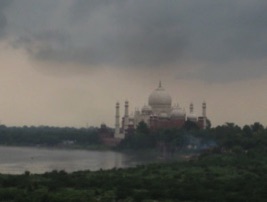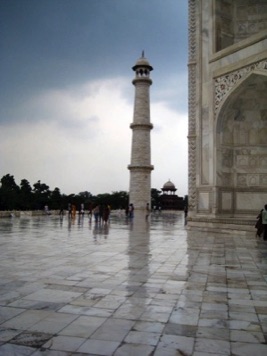
Asian Monsoon Evolution
Global climate can be affected on long time timescales through opening and closure of oceanic gateways that disrupt water circulation patterns and by the uplift of mountain systems that influence both atmospheric circulation and the intensity of chemical weathering of the continents, which in turn affect atmospheric and oceanic chemistry. Of all the proposed mechanisms by which the solid Earth has influenced global climate in the recent geologic past the suggestion that mountain building in Asia has intensified the monsoon circulation is the most dramatic. Indeed because the monsoon sustains two thirds of all mankind understanding what controls its intensity is not only of great scientific interest but also of great societal importance. If we can quantify the various processes that control monsoon intensity then we may be able to predict how future climate change may affect the densely populated environments of Asia.
For more than 15 years now I have been involved in understanding the development of the monsoon on a variety of timescales and using sediment archives to reconstruct how the intensity has varied in response to a number of possible forcing processes. In particular I am interested in the age of monsoon intensification and its possible impact on the growth of the Himalaya. In 2008 I proposed that while Tibetan plateau was generated by India-Asia continental collision the exhumation and uplift of the Greater Himalaya was delayed until after 23 Ma because of a lack of a strong summer monsoon that could drive the focused erosion needed to form these mountains.
More recently my work has focused on development of the monsoon since the Last Glacial Maximum in an attempt to understand how the climate change since that time has impacted erosion and weathering in South and SE Asia. My research involves the following primary questions.


• The need to generate climate reconstructions over longer periods of geologic time, spanning the
known range of Himalaya-Tibetan tectonism. Current records, while invaluable are not long
enough to test theoretical models or compare tectonism and climate.
• It is crucial to generate independent climate histories for South, Southeast and East Asia. The
monsoon varies strongly in character across Asia and a robust test of climate models requires
records for all the key regions.
• The same proxies for monsoon strength will not work in different regions and may not even be
applicable for all time periods. Development of better proxies is essential.
• Studies of far field sites, such as the Sea of Japan, or Timor Sea, Indonesia are important to
defining extent of monsoon activity, as well as in the “core regions” around the Bay of Bengal
and Indochina.
• Oceanic records are best supplemented by continental climate records, such the Loess Plateau
or ICDP drilling of the Qinghai Lake.